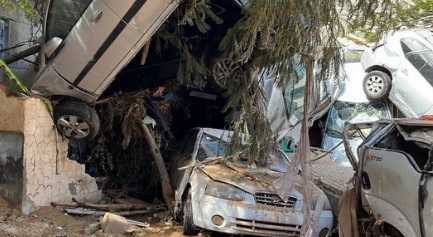
15 September 2023; MEMO: At least eight per cent of the population of Libya’s eastern Derna city was killed or went missing and a quarter of the city’s neighbourhoods were wiped off the map as a result of the disastrous floods which ravaged the country.
At least 6,000 people were killed and thousands of others remain missing, according to the latest official numbers.
Torrential rains swept several regions, most notably the cities of Derna, Benghazi, Al-Bayda, Al-Marj and Soussa.
Libya floods: ‘Everything swept away in the blink of an eye’
Worst in Derna’s history
Derna is geographically surrounded by the hills of the Green Mountain and the Mediterranean Sea and is divided by the Derna valley.
The port city witnessed a violent flood in 1941 during World War II, when it was under the control of German forces.
There were no reports of any human losses except for German tanks swept into the sea.
In 1959, Derna witnessed another violent flooding, which left hundreds dead and wounded, according to Faraj Daoud Al-Darnawi, a Libyan historian.
In 1961, Derna authorities built a medium-sized aggregate dam with a height of 40 metres (131 feet) to contain flood waters. The dam contributed to protecting the city from floods in 1968 and 1969.
During the ruling of Muammar Gaddafi, the dam was maintained in 1977, re-maintained in 1986, and another dam was built on the valley to enhance the city’s guard against floods.
In 2011, the city witnessed another flood, but the two dams protected the city and mitigated the impact of the torrents.
Wars
After the fall of the Libyan leader Muammar Gaddafi in 2011, Derna faced political isolation since it was controlled by several extremist groups.
Deash attempted to seize control of the city between 2014 and 2015, but it was countered by an alliance of armed groups in the city, which was able to defeat the terrorist organisation.
The city was further isolated when East Libya-based strongman Khalifa Haftar’s forces imposed a siege on Derna in 2016, and were able to take control of the city in 2018.




